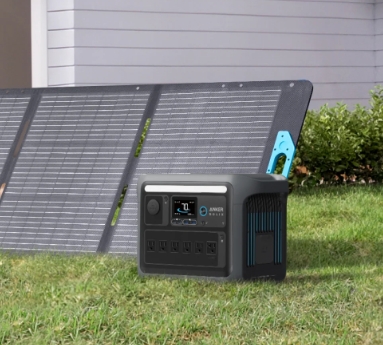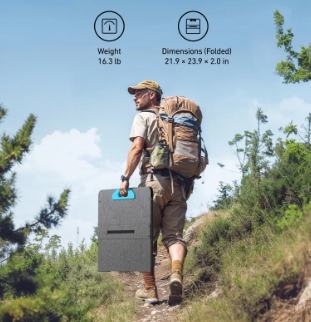Solar panel power banks have revolutionized how we access energy, especially in an era where sustainability and renewable energy sources are becoming priorities. Positioning solar panel power banks for maximum sunlight exposure is essential for optimizing their energy collection. Proper placement not only enhances energy efficiency but also ensures reliable power storage for various uses, including home needs and outdoor adventures. With strategic installation, the solar panel power bank can provide a consistent and efficient energy supply, reducing reliance on traditional power sources and enabling users to harness the full potential of solar energy.

Ideal Locations for Home Use: Balconies, Rooftops, and Windowsills
When considering solar power bank installations for home use, finding the ideal location is key to ensuring maximum sunlight absorption. The best places within a home setup are areas that offer unobstructed access to the sun for most of the day, such as rooftops, balconies, and windowsills. Each of these locations has its own benefits and challenges, but with careful consideration, they can become highly effective spots for solar panel installations.
Rooftop Installations for Unobstructed Sunlight
Rooftops are often regarded as the best locations for installing solar panel power banks. Being high and typically free from obstructions like trees or buildings, rooftops provide direct exposure to sunlight throughout the day. When setting up solar banks on rooftops, it is crucial to consider the angle at which they are installed. For instance, the Anker SOLIX PS200 Solar Panel is equipped with 4 set angles (30°, 40°, 50°, or 80°), which allows for easy adjustment to maximize sunlight absorption. Whether it's summer or winter, the adjustability of the solar panel ensures it captures as much sunlight as possible, making it a great fit for rooftop installations. Accessibility is another factor to consider, as maintenance and occasional repositioning may be needed to ensure optimal performance.
Balconies and Windowsills for Apartment Dwellers
For apartment dwellers who lack access to a rooftop, balconies and windowsills can serve as excellent alternatives for solar panel power bank installations. While these locations might not offer the same level of exposure as rooftops, they can still harness a significant amount of solar energy if positioned correctly. Balconies that face south or west are especially good for capturing sunlight during peak hours. Windowsills, although smaller in size, can still be a viable option, particularly in urban areas where outdoor space is limited. Solar panel power banks, like the foldable Anker SOLIX PS200, offer superior portability and compact designs, making them easy to set up on windowsills or small balconies. By adjusting the angle and position based on the time of day, apartment residents can still achieve efficient energy collection in these confined spaces.
Outdoor and Travel Installations: Best Spots for Off-Grid Adventures
For those who frequently venture off the grid, solar panel power banks provide an invaluable source of energy in remote locations. Outdoor enthusiasts, such as campers, hikers, and RV travelers, can benefit from the portability and efficiency of solar power banks when traditional charging options are not available.
Open Campsites for Maximum Solar Input
Campsites located in open areas, away from trees or large structures, are ideal for setting up solar power banks. These locations ensure that the panels receive direct sunlight for most of the day, maximizing their energy absorption. When camping, it is important to choose a spot where the sun is strongest during daylight hours, typically from mid-morning to late afternoon. By setting up solar panels like the Anker SOLIX PS200, campers can enjoy the peace of mind that comes with continuous power for their devices. This solar panel’s IP67 waterproof rating ensures it can withstand the elements, making it ideal for outdoor adventures, where unexpected weather conditions might otherwise pose a threat to less durable equipment.
Hiking and RV Installations: Portable and Easy to Adjust
For those on the move, such as hikers and RV travelers, portability is a key factor when choosing a solar panel power bank. The ability to easily transport and adjust the panel based on the sunlight conditions is essential. Many portable solar panels are designed to be compact and lightweight, making them perfect for outdoor activities. When traveling in an RV, solar power banks can be placed on the roof or set up near the campsite to capture sunlight during the day. Hikers, on the other hand, can carry foldable solar panels in their backpacks and set them up during rest stops. The Anker SOLIX PS200 is a prime example of such portability. With its foldable design and easy-to-adjust angles, it ensures that no matter where you are, you can quickly set it up to capture the sun’s energy.

Remote Areas and Emergency Situations: Critical Locations for Consistent Power
Solar panel power banks are essential in remote areas and during emergencies when traditional power sources are unavailable or unreliable. For individuals living off-grid or preparing for power outages, installing these power banks in spots with consistent sunlight is crucial. In remote cabins, they should be placed in clearings free of obstructions like trees, ensuring optimal sun exposure year-round. For emergency backup power, positioning solar banks in sunny, easily accessible areas can provide vital electricity for phones, lights, and medical devices during a crisis, offering a reliable energy lifeline when needed most.
Avoiding Common Pitfalls: Areas to Avoid When Installing Solar Banks
Finding the right location for solar panel power banks is essential, but equally important is avoiding common mistakes that can impact performance. Placing solar panels in shaded areas, where trees or buildings block sunlight, can drastically reduce energy efficiency. It's crucial to choose spots with consistent sunlight exposure throughout the day, taking seasonal changes into account. Additionally, installing panels in areas prone to harsh weather without proper protection can lead to damage. While products like the Anker SOLIX PS200 are built to handle tough conditions with an IP67 waterproof rating, securing them properly is vital to ensure both safety and optimal performance.
Conclusion
The efficiency of solar panel power banks is largely determined by their installation location. Whether you are using them at home, during outdoor adventures, or in remote areas, finding the right spot can significantly impact their performance. By carefully assessing your environment and selecting locations with optimal sunlight exposure, you can ensure that your solar panel power bank operates at its maximum potential. As renewable energy continues to grow in importance, adopting solar panel power banks is a smart and sustainable step toward energy independence.